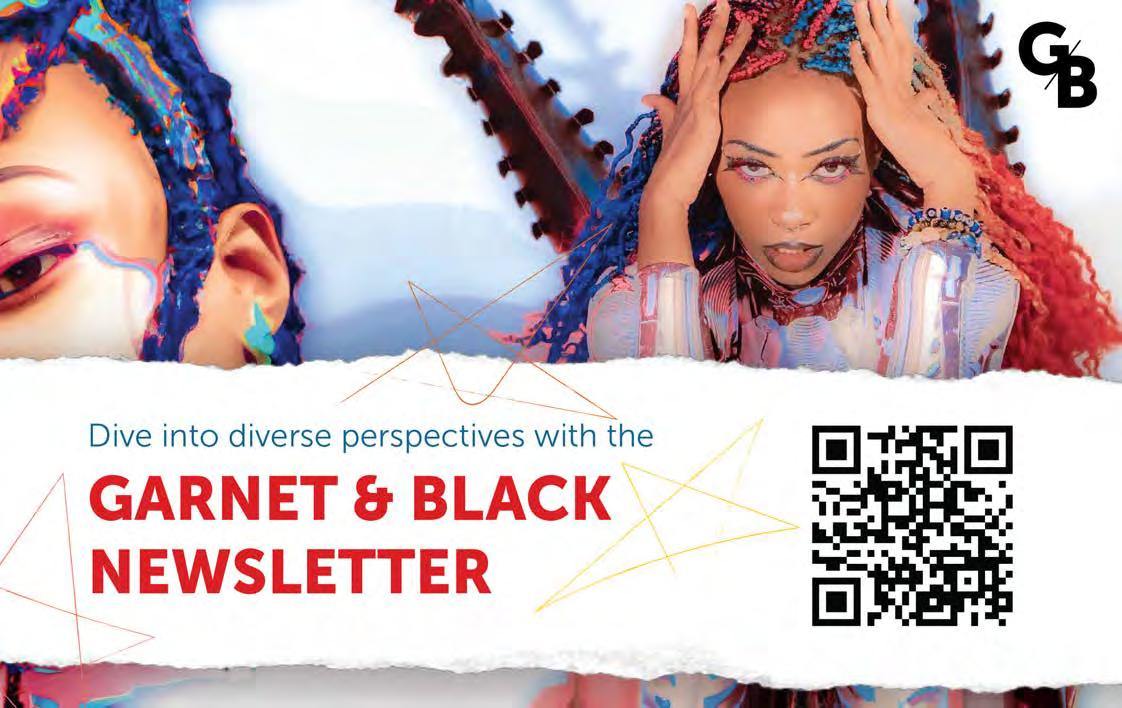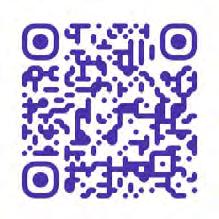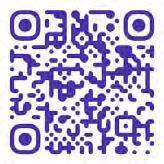




STUDENT MAGAZINE AT THE UNIVERSITY OF SOUTH CAROLINA SPRING 2023








STAY SAFE, STAY ALERT. @CarolinaAlert is the USC emergency notification system. Sign up to receive alerts and review emergency procedures: sc.edu/CarolinaAlert Download this app: RAVE Guardian is the all-in-one USC safety app. Set a safety timer so you never walk alone Connect with campus police during an emergency Submit an anonymous crime tip and more! sc.edu/RaveSafetyApp
STUDENT MAGAZINE OF THE UNIVERSITY OF SOUTH CAROLINA
EDITOR-IN-CHIEF MANAGING EDITOR CREATIVE DIRECTOR ENGAGEMENT DIRECTOR
FEATURES EDITOR Kendall Vorhis
ASSISTANT FEATURES EDITOR Kaylen Pritchard
HAPPENING EDITOR Kelly Hughes
ASSISTANT HAPPENING EDITOR Emalee Goode
LIFESTYLE EDITOR Ridha Fatima
ASSISTANT LIFESTYLE EDITOR Ahalya Muraleedharan
COPY DESK CHIEF Abbie Mott
PHOTO EDITOR Lexi Croft
ASSISTANT PHOTO EDITORS Alyssa Bladzik Henry Travis
ART DIRECTOR Melissa Borgerding
MULTIMEDIA DIRECTOR Zane Heinlein
STYLE DIRECTOR Toni Deloach
ASSISTANT STYLE DIRECTORS Benjamin Early Audrey Savage
SOCIAL MEDIA DIRECTOR Audrey Leach
PUBLIC RELATIONS DIRECTOR Awani Bildikar
AARON FALLS
CHELSEA WATSON
SAVANNAH NAGY
MORGAN PINCKNEY
FEATURE WRITERS

Raeva Bali, Kevin Connaughton, Alaina Haylock, Alex Ruz
HAPPENING WRITERS
Marshall Kuriakose, Gus Varallo
LIFESTYLE WRITERS
Kiersten Alexander, Jordan Jeffreys, Shakeem Jones, Mary Grace Labarowski, Ella Lukowiak, Brianna Rao
STAFF WRITER
Maximus Bowman
COPY EDITORS
Francesca Cumello, Christopher LeBarron, Jase Leonard, Courtney Tsakanikas
PHOTOGRAPHERS
Jaylen Anderson, Sydney Bonaparte, Madeline Cesarz, Hannah Flint, Raynee Quillen, Colby Sansbury, Allison Smith, Sarah Sutton, Jackson Tucker, Isabella Wethington
DESIGNERS
Alexandra Adler, Leslie Arango, Bryce Christian, Shash Comandur, Chloe Ehlers, Lily Ferguson, Hannah Flint, Sabrina Hampton, Sarah Hendrix, Julia Jackson, Clay Laucella, Imagine Patterson, Alexandra Tudor, Megan Wooters
VIDEOGRAPHERS
Robert Adams, Morgan Carter, Ilona Donovan, Faith Fulmer, Anna Heidel, Katie Rojas, Reece Wannemacher

STYLISTS
Lauren Cole, Joelle Elliott, Kassidy Hejlick, Jase Leonard, Mia McManus, Lily Miller, Tammy Nguyen, Hui Penaflor, Kylee Strickfaden, Linh Tran, Maggie Wensink
SOCIAL MEDIA MANAGERS
Lauren Ciuci, Amelia Codillo, Zamiyah Johnson, Ansley Peterson
PUBLIC RELATIONS MANAGERS
Kaedy Bornstein, Ambria Gilliard, Imani Polly, Sophie Wurster
AD SALES TEAM
Megan Chong, Sydney Evans, Ryan Forbes, Kylie Kurinsky, Donovan Ouzts, Sofia Sabatino, Sophie Smith

CREATIVE SERVICES






Leslie Arango, Ilona Donovan, Lily Ferguson, Sabrina Hampton, Jada Mack, Savannah Nagy
Advertising: (803) 777-3018
To contact G&B, email sagandbe@mailbox.sc.edu or visit www.gandbmagazine. com. Garnet & Black Magazine is printed twice a year by students of the University of South Carolina and is distributed for free to members of the university community. All editors can be reached via email on our website. The office is located in Russell House University Union Room 339.
DIRECTOR OF STUDENT MEDIA
ASSISTANT DIRECTOR OF STUDENT MEDIA
ART DIRECTOR OF STUDENT MEDIA
ADVERTISING ADVISOR
FACULTY ADVISOR
Sarah Scarborough
Sydney Cranmer
Krista Larson
Parks Rogers
Scott Farrand

SPECIAL THANKS
Jason Porter
Cover Design by Savannah Nagy, Melissa Borgerding, Lily Ferguson, Shash Comandur, Aaron Falls & Toni Deloach 54 52 50 46 40 38 36 32 28 Music Through The Decades In Retrospect The 10 Biggest Trends for Spring Alexa, Why Are AI Voice Assistants Female? Artificial Intelligence in the Humanities: Apocalyptic or Over Exaggerated? The Rise (And Consequences) of Online Anonymity Out With the New, In With the Old A Letter to My Future Child in the USA The Battle Between Technology and Sustainable Farming The Roaring 2020s Studio 23 Into the Metaverse Must be the Wind My Heart Bears Me Leaving it to the Experts The Author is Dead From Cubicles to Cars Letter from the Editor
FOR MANY OF US, the spring semester is a time of looking forward to the future. Summer travels, time to relax and self care await. For many graduating seniors, such as myself, it is a horrific-yet-beautiful amalgamation of fear, uncertainty and unbridled excitement. On a broader scale, perhaps this unique combination of emotions can be extrapolated to the future as a whole, not just our personal futures.
In a time full of change and innovation, there's no telling what our future could hold. The developments of artificial intelligence, machine learning and interactive technology, for example, have already begun to impact how we interact with ourselves and others. We may be on the cusp of a massive societal shift with the advent of the Metaverse, virtual reality and augmented reality. Or maybe not. Who knows? Only time will tell.

Regardless of what the future may or may not hold, I know one thing for certain: change and innovation are inevitable, and we must adapt to it and embrace it. Looking forward, do you see a version of you who willingly accepts
change? Or one who digs their heels in, refusing to move while the whole world moves and advances around you?

In this print edition, we chose to embrace change by exploring new interactive technology and augmented reality. You'll see lots of QR codes and things to scan in this issue. New ways of interacting with a story. So point your phone camera at everything you can. Give it a shot.

This is one of the things I love the most about student media. We can give things a shot. We aren't bound to the same expectations of legacy media organizations who often do things the way they have for decades because "that's how we've always done it." We have a unique opportunity to grow and adapt the medium. We can be flexible in ways in which other publications are inflexible. We can question the status quo and explore new things. After all, who says a magazine has to exist only on paper?
In this issue of Garnet & Black Magazine, we want to inspire you to think

of shaping the future. We invite you to read this edition with an open mind and to consider the role you can play in shaping the way we live for years to come.
As always, thanks for reading Garnet & Black Magazine.
P.S. Part of this letter was written by an AI. Isn't the future cool?
F
A.I. generated art and writing is here to stay. Will the human be taken out of the humanities?


 BY JORDAN JEFFREYS • DESIGN BY LILY FERGUSON • AR BY ZANE HEINLEIN, FAITH FULMER, MORGAN CARTER & REECE WANNEMACHER
BY JORDAN JEFFREYS • DESIGN BY LILY FERGUSON • AR BY ZANE HEINLEIN, FAITH FULMER, MORGAN CARTER & REECE WANNEMACHER
ARTIFICIAL INTELLIGENCE (A.I) has been making a big impact on the world of art and writing. A.I.-driven tools are increasingly being used to create artwork and writing that is indistinguishable from human-made creations. This has caused much debate, as some people are concerned about the implications of this technology for creativity and artistic expression. A.I. writing tools have already been used to generate books, poems and even entire novels. A.I. art creation tools have also been developed, allowing artists to create unique pieces with the help of A.I. algorithms. This technology has sparked controversy, as some people worry that it could take away from humans’ creative potential and limit artistic expression. Some people argue that A.I.-generated works are not truly “original” or “creative” since they lack the emotion and creativity that only humans can provide. This debate will likely continue as A.I. becomes more advanced,

GARNET & BLACK | 7
but it’s clear that A.I. is here to stay in the world of art and writing. As technology advances, so too will our understanding of how these tools can be used to create unique works of art and literature.
The paragraph above was written in 4.2 seconds using the website Rytr and typing in “role of A.I. in writing and art.”
A new viral trend is beginning: A.I. writing and A.I. art. Major programs like ChatGPT and Jasper Art are taking the internet by storm, and people in almost every career are being—or will be— impacted by these A.I. generators. When this article was written, ChatGPT had already gone so viral that the website had been at capacity for three days.
A.I. writing generators are becoming very powerful tools. For instance, people can use Rytr to write blog posts, essays, emails, cover letters, business pitches, story plots, YouTube video ideas and even song lyrics. Users also have the choice of 21 writing tones to choose from, ranging from formal to humorous to worried.
According to the Washington Post, A.I.-generated writing and art works in virtually the same way: the A.I. is trained by going through millions of articles or images, then creates its own product based on these other works. All of this happens within seconds. As a result, there are many opinions regarding how ethical A.I.-generated art and writing are.
Hobby artist and USC student Bhavani Tuppale believes that A.I.-generated art and writing can be a form of plagiarism
On the other hand, Dr. Gareth ReesWhite, an English professor at the University of South Carolina, has an alternate opinion. “I think we need to rethink what plagiarism is,” Rees-White said. “I think if we can work out a way to do this whilst giving credit where credit should be due, in theory, this could be an evolution of things like spell-checking.”
“If you sample something from someone else and use it for a different purpose, you’re creating new art through that thing,” Rees-White said. “If you’re taking something and it was not your creation and using A.I. to make it a bit different and you’re not giving them credit for it, you’ve stolen it at the end of the day.” According to Rees-White, there are proposed training sessions for faculty at USC who want to know how to watch out for students using A.I. writing generators to write essays.
“But my sense is that there is also an element of how you could maybe make it not a demon, like make it not be the thing that destroys education,” Rees-White said. “Instead, make it the thing that could actually just be the next step in education.” Nevertheless, Rees-White predicts that this is something that’s now having to be taken into account when making the standard syllabi.
Another major argument regarding A.I. writing and art debates is whether A.I.generated content really “counts” as a valid contribution to its field. Some people argue that A.I.-generated pieces cannot be truly considered art.
“In digital art or traditional art there is some effort that the artist themselves put onto it, executing some idea,” Tuppale said. “I don’t think that [art] is quite valid unless there is some sort of originality put
Scientific American suggests that A.I.-generated art cannot be considered art: a machine cannot consciously express an idea, personal experience or



In contrast, Rees-White thinks that this can be reconciled by changing our perception of what art and writing are. “It is ultimately still writing. It is ultimately still art. It’s just not writing and art in the

All images created using DALL E 2 open AI. 8 | GARNET & BLACK
conception of it that we have of it,” ReesWhite said. “Where it goes into the extreme gray area is who counts as the creator.”


So, who gets the credit when it comes to A.I.-generated content? Because of the novelty of this concept, a definite answer hasn’t been established. According to Smithsonian Magazine, actor James Earl Jones has sold his voice to Disney so that his vocalizations can live on as the official voice of Darth Vader. This is made possible by an A.I. program that learns Jones’s vocal tones and inflections. When it comes to using A.I. like this, who gets the credit is very much a gray area.
“Does James Earl Jones win best actor? Does the person who wrote the A.I. script get the award? Does the person who wrote the film script that the A.I. reads get the award?” Rees-White said. “We are gonna have to really reconceptualize how we actually approach these things. Because in the current iteration of everything, it is unjust. Someone won something for something they didn’t do but also someone needs to win that something.”
Studio art major Caroline Anderson believes that A.I.-generated content are valid contributions, but should be judged independently from human-created content. “I think for it to be fair to artists, it shouldn’t be competing in the same bracket with other art,” Anderson said.
But in an increasingly automated society, when does human-created content become too inefficient for companies and organizations to support? From a purely economic standpoint, it will always be faster and cheaper to get A.I. to create art or write an article than it would be to employ an artist or a writer. A.I. doesn’t have to eat or sleep. It doesn’t have to be reimbursed for its time. It can create thousands of words and images in a matter of seconds. Humans simply cannot compete.
“There is a transition from people drawing on paper to using digital art and that transition can happen again to A.I. if it costs [consumers] less money” Tuppale said. “In that way, I feel that the use of A.I. can be seen as a bit abusive because you’re taking opportunities away from artists to

excel and giving it to a machine.”
Anderson thinks graphic design and logo-making will be the first to go. “I am worried for my friends in graphic design and similar jobs just because it’s gonna be tough competing with something whose entire purpose is to do that one thing,” Anderson said.
Rees-White also seems to believe A.I. technology will change the job market, but he is hopeful that the appreciation of humanity will still triumph. “Some people will get displaced,” ReesWhite said. “Some of those people will definitely be writing instructors, but there will always be a human element needed. I don’t know if it will be as disruptive as it seems right now.”
Nevertheless, A.I.-
Anderson cited the fact that when photography got popular, realism and portrait artists were concerned about their career security. “Art changed entirely,” Anderson said when reflecting on the beginning of photography. “That’s when you get cubism. That’s when you get impressionism. I think there’s going to be a new birth of that. Art’s just going to change.”

Most people believe that will be the key to this shift towards A.I.-generated art and writing. “I think we are going to have to adapt and evolve,” Rees-White said. “Some people will refuse to do that change because it’s different and people don’t like different things, and some people will be able to adapt to that change.”
One thing is certain: A.I. is here to stay, and it will continue to play an important role in the world of art and writing for years to come. It looks like one of the few ways we have to reconcile automation and humanity is to learn how to adapt and remind ourselves of the importance of the humanities. In a constantly changing world, people are going to have to continue
GARNET & BLACK | 9
Into The Metaverse

Exploring the mysterious metaverse to discover what Zuckerberg has in store for the future of the internet
BY MAX BOWMAN • DESIGN BY JULIA JACKSON • AR BY ZANE HEINLEIN
10 | GARNET & BLACK
THE METAVERSE IS AN INCREDIBLY mysterious concept. According to Wired, the metaverse,“doesn’t really refer to any one specific type of technology, but rather a broad (and often speculative) shift in how we interact with technology.”
One way that the metaverse can be accessed is through Meta Horizons World. Even after a year in operation, many people don’t understand what Meta’s multiple iterations are or what you can do in them. Part of this problem comes from the limited availability of virtual reality headsets, but a lot of the confusion comes from the very vague advertising that surrounds this product. It’s marketed as a lot of things: a virtual world that provides a new way of interacting with people online, a new way to work virtually and so much more.
There’s a lot that’s supposedly “new” about this metaverse. But what incentive do we have to even engage in this novelty? What benefits does this give us that we don’t already get from other social media or simply going out and talking face to face? More cynically, what risks does the metaverse have that we’re not aware of, and what dangers could it pose to our privacy if we’re not careful?


To explore this strange new world, my first step was getting a virtual reality (VR) headset. For this experiment, I used the Meta Quest 2, which came with a microphone to talk with others inside of the metaverse. The second step was getting a Meta account. This is a downside for anyone who isn’t interested in handing out any important information to Meta CEO Mark Zuckerberg, who was famously interrogated by the Senate after harvesting and selling data from over 87 million Facebook users, according to the New York Times. Now, every Meta Quest comes with Meta Horizon Worlds, the metaverse’s premier app. This allows users to explore
and create virtual reality worlds and interact with other users inside of them. These worlds are the main draw of the metaverse for consumers right now, so I jumped in to find out what the metaverse has to offer.
It’s just VRChat. Literally.
VRChat is a game you can play in VR or on a PC, and it is essentially the same thing as Meta Horizon Worlds. VRChat is an online communicating platform that connects both VR users and non-VR users. The platform reached a record popularity of up to 20,000 concurrent users in 2018, according to an article published by Road to VR. Users create their own avatars and go into worlds created by other users and interact with people. VRChat also has sex clubs and other promiscuous content that doesn’t make it past Meta’s censors, but the only real difference is that Meta’s apps are accessed through apps for companies to hold work meetings and other benefits.
The worlds inside Meta Horizon Worlds can be separated into two main categories: playgrounds and social spaces. Playgrounds include obstacle courses, role-playing arenas and virtual worlds of exploration. Obstacle courses are similar to Roblox, a free-to-play game where players also make their own worlds to play games and socialize in. Role-playing arenas are worlds in which users can act as characters within a specific situation. Arenas include “Superheroes vs. Space Wizards,” “Kawaii Police Academy,” or “Meta McDonald’s,” all of which I extensively explored during my journey. Virtual worlds of exploration allow individuals to explore virtual environments they may not be able to encounter on a daily basis.
From personal experience, I can attest that playgrounds are almost exclusively populated by young children, which is especially concerning given that the minimum age to set up a Meta account is 13
QR GARNET & BLACK | 11
years old. Now, as anyone on the internet can tell you, there’s absolutely no age limit that can’t be bypassed by simply lying. The main issue is that children, and users in general, are too naïve and often give away personal information like age and location to strangers they don’t know. This opens the door for potential predators to learn information about these children and start communicating other ways to achieve their goals. Meta does not extensively moderate its worlds and age restrictions, so the problem of managing children and adults in these playgrounds and social spaces is entirely placed upon the owners of the specific world.
Micahboii92 is a moderator for the “Soapstone Comedy Club,” one of the more popular user-created spaces inside the metaverse. He talked about the issues with trying to moderate the experience for different age groups, stating that it’s incredibly difficult to keep adult and children spaces separate, especially when someone can just lie to get into adult spaces. This isn’t a sustainable solution, especially for worlds with minimal creators or moderators to manage traffic 24/7.
The second category of worlds is the social spaces, which make up most of the app. These social spaces are incredibly varied and unique, ranging from comedy clubs and music studios to live, pre-recorded events such as concerts and sports. Some of these spaces are created by Meta themselves, such as concerts, and these spaces often have limited opportunity for social interactions. When I attended a pre-recorded Billie Eilish concert that was stated to have over 300 attendees, I only noticed three users, who were all muted as they watched the concert.
The social spaces created by users themselves are incredibly varied. There are
music studios where people can freestyle rap to beats created by other users. There are dating spaces with romantic scenery and ambiance (I may have joined a space in the middle of a metaverse date), and even comedy clubs where people can perform stand-up routines in front of a virtual crowd. All of these spaces are tailored to specific audiences, with Black comedy clubs and minority-oriented spaces offering safe spaces for those who want them.
These spaces, unlike the playground areas, are split between children looking for somewhere to play and adults looking for somewhere to chat. These children often ambush adult spaces, which either results in children getting mass removed, such as in Soapstone Comedy Club, or the adults simply leaving the area to find a better space to converse. This can often cause issues in these spaces, such as adults talking about their jobs or personal lives only to be interrupted by children who scream on the stage of a comedy club for fun.
“We’ve tried to help the situation by forcing people to agree that they’re over 13, as they’re supposed to be over 13 to use a Meta account anyways,” said Micahboii92. “But at the same time, we are trying to create more events and spaces designed for kids, like our Soapstone Jr. events on Sundays.”
Talking with people in the metaverse gives some very interesting revelations about how and why people use this app, but it also reveals some potential problems.
Misty1983 was an adult woman in her late thirties who had just gotten a VR headset a few days before our interview, and she said that she went on this app because she, “loved the idea of meeting new people.” She said that there didn’t seem to be any real difference in interacting with people, and had a very similar time meeting and
talking with people in the metaverse as real-life interactions.
theclaw000, a college student at the University of North Carolina at Chapel Hill, just got a headset over winter break and was still getting used to the metaverse when he was interviewed. He liked the idea of meeting people from all over the world and over a wide range of ages, which made the metaverse a very fun experience for him. “Personally, I find it kind of scary that there’s so little difference between interacting virtually and physically. Like, I even had a dream last night where I was in the metaverse. It’s kind of creepy.”
Micahboii92 also mentioned, similar to theclaw000, that his experiences in the metaverse have bled over into his real life. In Meta Horizons World, when you raise your hands, confetti pops out of your avatar. Michaboii92 found himself carrying this habit into his real life.
“One time I went roller-skating with a bunch of friends, and I was super excited so I put both my hands into the air like you do in here, but no confetti popped out and I got super confused,” Michaboii92 said. “Everyone asked what I was doing and I had to explain that I thought there was going to be confetti.”
The metaverse has a way of feeling more real when you’re inside than it’ll ever look in pictures or videos you see on your phone. It’s a world that you know isn’t real at all, but your brain becomes tricked into feeling perfectly at home there, and that comes with concerns. Whether it’s fireside chats with people showing emotional vulnerability or users pretending to be something that they’re not, the metaverse creates a space where people can be extremely forthcoming in good ways and bad.
12 | GARNET & BLACK

Or is someone at the door?
BY RIDHA FATIMA • DESIGN BY LILY FERGUSON AND MEGAN WOOTERS
 AR BY ZANE HEINLEIN & MORGAN CARTER
AR BY ZANE HEINLEIN & MORGAN CARTER




14 | GARNET & BLACK
01/02/2023 Clearing the Cache - blog clearingthecache.com /security/thread
Welcome to Clearing the Cache, a blog about reviewing obscure technology pieces to raise awareness on lesser-known technology.



Happy New Year!
I know it’s been a while since I last posted, but it’s been a crazy couple of weeks since I had family over for Thanksgiving and New Years. I haven’t had time to buy any new tech for a moment, but when my husband saw this home security system on eBay, I knew I had to try it out. Apparently, the system allows you to see and hear who’s at your front door through a monitor, and you can speak commands to open and close your door from a distance. I was really interested because the product was only $35. I’m wondering how well it will work out.
The security system came in the mail this morning in a rain-soaked cardboard box. Weird, because it’s been sunny for the past two weeks. I tried seeing where the product was being shipped from, but I couldn’t find it on the site. When I opened up the box, the parts themselves seemed in very good condition: there was a camera, a monitor and a microphone. According to the instructions, the camera and microphone were already connected to the monitor, but you needed to plug the monitor into the wall in order to control the front door. The manual didn’t say to do anything else.
At this point, I was pretty sure this was a scam and I’d wasted my time and money. How was the system going to open my door if there wasn’t even any wiring to connect to it? However, once my husband set up the camera outside and I connected the monitor to the wall, the screen flickered to life. I could see my husband outside our front door, and we made conversation relatively easily. He locked himself out of the house, and I spoke into the mic to open the door. To both of our surprise, our door unlocked and opened on its own. We tried this a few more times to make sure (sometimes I would go out and my husband would try the mic) and each time our door opened successfully
01/05/2023
It’s been a few days since I bought the home security system, and it’s been working great. We’ve only really needed to use it twice (we don’t really get a lot of foot traffic into our house), but it’s definitely been much more convenient than needing to go to our door. I will say, though, that sometimes the monitor seems to glitch a little. If I’m looking at it out of the corner of my eye, I feel like I see some odd shapes moving across the screen. It might be something that can be fixed with some rewiring, though.


Hi! I know I usually don’t make more than two posts for a product, but I wanted to give a warning about the home security system. Be very careful when speaking near the mic. Today I was talking to my husband about going to the grocery store, and the microphone must have picked up my voice because the next thing we saw on the monitor was our front door open. I thought I saw something float in through the door, too, but that must have been another glitch. Or maybe there was a bug flying through the camera, even though they don’t come near the house in the winter.
Thankfully, since both of us were home nothing crazy happened, and Keith quickly went to shut the door. However, this is obviously a really big flaw in the system. You wouldn’t want your door to randomly open without notice. With that in mind, I can’t confidently recommend this product anymore. We will be disconnecting the product tomorrow.
I am shocked at how easy this system was to set up, and how well it seems to work. For the price, you’re getting a really good product. I would definitely recommend this if you’re in the market for a home security system! I’ll keep you all updated in the next few weeks on how it holds up. 01/06/2023
GARNET & BLACK | 15
Follow along to read a review on a mysterious home security system, the last series of posts on this website.
01/07/2023
I’ve been having a hard time disconnecting the security system. Every time I unplug the monitor from the wall, the screen won’t turn off and our front door opens. The last time I unplugged it the door opened so harshly it left a hole in the drywall. It’s like someone is doing this out of spite.
Keith has been acting weird all day too. He’s been very standoffish and quiet, which is completely unlike him. Every time I ask him for help with the security system he gets angry and tells me there’s nothing wrong with it. I don’t understand why he’s fighting with me so much. When we first found this system on eBay he told me not to get it because he thought it was a scam. I don’t know why he switched up so quickly.
Anyway, I called our electrician because I’m not sure who else to reach out to. They said it would take 3-5 business days for them to come by our house. I guess I’ll just have to wait until then.
01/08/2023
There’s been some weird static coming from the monitor. I don’t know what it is, but it almost feels like someone is saying something. I don’t like being near it, and yet I feel like I can hear it throughout the whole house. I know it doesn’t make sense, and this must be my imagination, but I’m getting very scared.
My front door keeps opening too, no matter how much I avoid speaking near the mic. I keep telling Keith, but he’s just claiming there isn’t a problem. Even though once the door opened on its own right as he was passing by it. He didn’t even stop to close it.
I also keep seeing things on the monitor that aren’t there. Today they look less like amorphous shapes and more like people. Once I was passing by the monitor on the way to the kitchen, and when I looked over it seemed like there was a man standing on our front porch. Except he didn’t look quite like a person; I couldn’t really make out any defining features, but his head was definitely way too close to the camera for him to be of regular height. (For reference, my husband set the camera five feet above our door.) I think this thing turned its head to look at the camera, and I swear that it didn’t have a face.
I screamed and turned away from the camera for a second. When I looked back, the creature was gone but our front door was open again. I told my husband about this but to no avail.
I don’t really know what to do anymore. Last night, I was passing through my front door again, and I got this chill like something was staring at me through the wood of the door. Like it could actually see me.

I don’t really feel safe in my house anymore. I’m packing my bags and going to stay with my parents for a little while. They live about an hour away from me, so hopefully the distance will help until things die down. I’m not sure if I want to tell Keith about my plan; I’ve been feeling very wary around him. Will keep you guys updated.
01/09/2023
Against my best judgment, I told Keith I wanted to leave the house because I keep seeing things. For a moment, he seemed to come to his senses. He said he doesn’t remember anything from the past few days; he feels like he’s being possessed.
Don’t buy the security system. Whatever’s in that thing, it’s not hu
01/09/2023
Apologies for the abruptness of my last post.
The front door had opened again. I was able to close it quickly, and both my husband and I are safe. As for the security system, we haven’t had trouble with it since that last incident. Both Keith and I are fine, and we have been able to get back to our routine as normal. We will be starting work again tomorrow, too.
I want to give some disclaimers about the security system. I fully endorse this product after keeping it for a few more days. When the electrician came around, I told him that they no longer need to worry about our wiring, and even invited him in and showed him the tech. He seemed very impressed and said he would buy a security system for his home as well. Do not worry if you hear static from your system. It is most likely the wind. You also do not need to worry if you hear screaming. That is also, most likely, the wind. The monitor can be hypersensitive to changes in the weather. Also, if you are careful with how you position your mic, you will probably not have problems with the door opening against your will. And any creatures you may see on your monitor? Do not worry about them. Most cannot enter your home. You should, however, be concerned about the things that make it past your front door. Not that it will make much difference to you, though. Most people do not notice us until it’s too late.
16 | GARNET & BLACK



Dangerous rhetoric does not become less dangerous when shared anonymously. In fact, it’s quite the opposite.
 BY KAYLEN PRITCHARD • DESIGN & AR BY MELISSA BORGERDING
BY KAYLEN PRITCHARD • DESIGN & AR BY MELISSA BORGERDING



18 | GARNET & BLACK
mentions of murder, rape and sexual assault

YikYak has its roots in the South Carolina college scene. In 2013, two students from Furman University founded the anonymous conversation app, and it took roughly a year for it to truly reach its mid-2010s prominence. College students specifically found YikYak to be a fun pastime because it puts the user in an anonymous communication feed with people within a five-mile radius, accounting for users’ entire campus.
However, as quickly as YikYak began frequenting the home screens of young people, the app hit a sharp downfall in the following years and eventually became completely defunct. The reason? A plethora of threats of violence against minorities, women and other groups, some of which actually resulted in violent actions.
Recently, YikYak has taken the country by storm once again, most notably on college campuses. The aspect of anonymity allows students to say essentially anything they wish without fear of their words being traced back to them. Any USC student who frequents the forum knows that while most of what is said is harmless or even funny, there is still no shortage of hurtful or dangerous verbiage in the local feed.
As this article is being written, some “Yaks” within the USC five-mile radius include “upvote if you like soup,” “i wish i was bulimic” and “run back the holocaust.”
USC freshman Sarah Lynch downloaded YikYak in high school as the app started regaining popularity on college campuses. While this newfound interest in YikYak
started out harmless at Lynch’s school, it wasn’t long before the famously problematic forum was banned and several students were suspended.
Lynch said that she and her friends began limiting their presence on YikYak after her school’s feed became filled with instances of racism, fat shaming, slut shaming and frequent bullying of students and teachers. “It was really difficult because you’d be on it and you’d think, ‘wow, this is so funny,’ but then the next one you’d see would be something completely ridiculous and out of pocket. There were slurs being used and stuff like that, and it was just disgusting.”
Lynch says that the anonymous feature emboldened students to spread hate freely without much fear of getting caught. “Especially since it’s not going to be traced back to them,” Lynch said. “They just hide behind that mask.”
Some students are concerned about hateful rhetoric being circulated around campus via YikYak without any knowledge of who said it. Sadly, they have good reason to be worried.
In 2015, a student at the University of Mary Washington named Grace Mann was murdered by a member of the school’s rugby team. Mann was a leader in a campus feminist group called Feminists United, and after her murder, it was found that there was a host of YikYaks put out by the other members of the rugby team calling for violent acts such as rape and necrophilia against women, especially those associated with Mann and Feminists United.
Friends of Mann and others on campus tried to hold UMW and YikYak responsible for inaction despite being aware of the situation, but they were ultimately unsuccessful. There isn’t much recourse to trace dangerous words back to their origin without a search warrant or something of similar weight. Historically, institutions and the platform itself have done a poor job of preventing real-life violence from manifesting as a result.
Another popular forum among high school and college students is Discord, a communication platform intended to connect people with others who share their interests. While Discord is not advertised as an anonymous space, there is a great deal of anonymity among the users, who often use nicknames, fake profile pictures or fake ages and genders. While this personalized online presence is usually completely harmless and makes it easier to connect with others, there are cases where this anonymity has been manipulated to exploit young Discord users.


While the term “Discord kittens” is commonly associated with cringe culture, it actually originated to refer to the countless teenage girls groomed on the forum by older men pretending to be of similar age and sometimes even the same gender as the girls they targeted. The girls would be engaged in days- or even months-long conversations with their new online “friends” before being pressured into doing things such as sharing their home addresses or sending pornographic images or videos. In November of 2020, Discord shut down an

entire server of over 500 men who had been illegally sharing such photos and videos that they had acquired.
Young women on Discord also conceal their identity, but with a set of very different intentions. Women often find that they are not respected by men on the forum unless they present as men themselves. Discord is highly saturated by members of the gaming community, and there is a famous stigma against gamer girls imposed by male members. In order to avoid verbal harassment, some female gamers will go so far as to use a voice changer to sound more masculine. While the necessity to do so is a problem in itself, online anonymity can give those who appear feminine a way to find more acceptance in the gaming community.
Much less innocently, anonymity has been proven to protect the interests of online hate groups. The introduction of the internet into society has provided all manners of hate groups with a place to disseminate their ideologies, and it can be argued that one of the most popular hubs for such activity is Reddit. Like Discord, Reddit does not promote itself as an anonymous forum, but the user base typically chooses to present itself more or less anonymously.

Reddit is famously brimming with people promoting sexism, racism and violence. There is an entire Wikipedia page dedicated to subreddits that were
banned for promoting notably dangerous behavior, including r/BeatingWomen, r/ DarkNetMarkets and r/frenworld, the last of which became a haven for neo-Nazis and Holocaust deniers. Other subreddits listed on the Wikipedia page are still active.
The vast majority of those who engage in these kinds of subreddits shield their identities using various degrees of online anonymity. Often, the most that can be done to prevent the spread of harmful rhetoric is shutting down the platforms. Unfortunately, without being able to identify the perpetrators, it is expected that they will then form a new subreddit or move to a new forum. This results in an endless cycle of banning and regrouping.
While people have argued that banning these groups from social media platforms infringes upon their free speech, according to an article by the Council of Foreign Relations, “Hate speech online has been linked to a global increase in violence toward minorities, including mass shootings, lynchings and ethnic cleansing.”


This issue is not limited to the United States, but the most prominent source of this violence in the US has come from white supremacist ideologies. Many of the perpetrators of violence against minorities can have their motives linked back to dangerous rhetoric they were exposed to on online forums.
As of late, a staggering number of


domestic terrorist attacks against Black communities have been inspired by an ideology known as the Great Replacement Theory. This conspiracy theory supports the idea that white people in the United States and all around the world are being “replaced” by immigrants, Muslims and other people of color. Racist and xenophobic terrorists will justify their attacks in response to this way of thinking, which has been perpetuated in online spaces for years. A widely discussed case that occurred in the US is the 2022 Buffalo supermarket shooting that killed ten people from a predominantly Black part of the city. This act of violence has been traced directly back to online hate groups promoting the Great Replacement conspiracy.

While platforms and individuals do what they can to extinguish toxic dialogue born from online anonymity, the fact of the matter is that hate groups are not going anywhere anytime soon. When used responsibly, anonymity can help people find acceptance in online communities, and personal vigilance and responsibility are crucial to navigating the modern internet.
It can be easy to feel a sense of false security and protection in online anonymity, but once words are out in the open, they can have devastating consequences. So choose words wisely.
20 | GARNET & BLACK
my heart bears me a babe birthed anew in every broken beat every melody strummed on the fragile strings that keep me moving, breathing, feeling popping poetry like pills
i let the words slide through my lungs the air of broken hearts and unsteady limbs supporting my concaving soul
i stack words like beams sturdy in their strength, with lines intertwined
i drink myself giddy empty bottles litter the ground, labels reading euphoria sunrises
all of the colors in the world i drown myself in joy until i am treading water until i can no longer touch all of the sadness
sunken to the bottom it lurks, my monster in the closet the one i cannot see but know is there
BY ELLA LUKOWIAK • DESIGN BY MEGAN WOOTERS
i plug my nose, count to three and dive on two reverse, reverse, reverse arms carving through the water my palm meets the pain i am grasping at it in fistfuls the pulse of my heart sending it swirling, spiraling into the waters above until i am breathing air the water suddenly shown only on my drenched body, prickled and shaking
i pull at my skin, my hair, my eyes for swimming to the bottom collecting heartbreak like seashells my cheeks now wet from salty tears
i turn to my nightly prescription bottle of affirmations
i use my night light to guide me back to the waters i know drink euphoria and sunrises and colors until i am floating a babe once again
born anew in every pulse of this fragile heart before bed, i touch my thumb to its center and paint all of the wild colors down my arms, each stroke a promise not to dive deep again my heart now barren on my sleeve it tickles in the way all promises do that are made to be undone but floating now, i greet the sun and whisper to myself happy birthday

GARNET & BLACK | 21
the battle between
Can the relationship between technology and sustainable farming be reconciled, or will technology always be the antithesis of sustainable farming?
BY JORDAN JEFFREYS • DESIGN BY MEGAN WOOTERS • AR BY SABRINA HAMPTON
FOR MANY PEOPLE, the intersection between the rise of technology and antiquity of organic farming is like a battlefield. Over the past few decades, the war has continued to rage on. The industrialization of agriculture has lead to the vision of agriculture many people have today—large gas-powered machines plowing fields of a single crop; farmers spraying chemical fertilizers and pesticides, allowing them to run off into our rivers; livestock pumped with antibiotics to counteract the inevitability of disease from compact living quarters.
One side of the battle claims that industrial farming has been essential to feeding our rapidly growing population by providing cheap food at high quantities and reallocating our labor force through a decrease in the number of farmers.
Proponents of industrialized farming believe that our immense population, eight billion as of 2022, is simply unsustainable under any other agricultural model. Organic farming, for example, is not able to produce the great quantity of food that industrial farms can produce (especially considering that only 10.5% of the workforce in the U.S. is allocated to farming, according to the USDA).
The other side of the battle claims that industrial farming is causing more harm than good. The chemicals used in industrial farming pollute the soil, water and air through runoff and nitrogen
production. Globally, raising livestock accounts for 7.1 gigatonnes of carbon dioxide, making up 14.5% of all greenhouse gas emissions according to the Food and Agriculture Organization of the United Nations. Monoculture depletes the soil of nutrients and biodiversity while also contributing significantly to erosion. The antibiotics used in livestock have made large contributions to the global problem of antibiotic resistance. The machines and transportation needed on these farms continue to add to fossil fuel depletion and air pollution.
So the question is: can the relationship between technology and sustainable farming be reconciled, or will technology always be the antithesis of sustainable farming?
Mai Dinh, a USC student involved in Sustainable Carolina, says that the future of sustainable farming will be greatly empowered by technology.
“Technology helps to maximize yields and nutrient efficiency while decreasing needed resources,” Dinh said. “This, overall, helps to create environmentally friendly and convenient farming systems.”
For example, Dinh explains a promising farming technique called hydroponics. Hydroponics consists of growing plants using a water-based nutrient solution instead of soil. According to Dinh, this technology has made great advancements in making horticulture more sustainable.
22 | GARNET & BLACK
Hydroponics can be used in indoor and inert vertical systems, reducing land usage while eliminating the need for harmful fertilizers, herbicides and pesticides. Hydroponics is also extremely efficient: it can be successful in any season and water condition.
“Less water is also needed since it is recaptured through pipes in an active system to be reused,” Dinh said.“ So, hydroponics is efficient in terms of water usage and nutrient cycling.”
This makes hydroponics an effective tool for agriculture in places with poor soil, limited space and arid climates, leading to reduced food shortages and food deserts in these areas. This can also lower emissions from transporting food long distances.
However, hydroponics isn’t without its flaws. According to Dinh, global agriculture is very unlikely to completely convert to a process like hydroponics. Not only is it very expensive, but it also uses a lot of energy and creates a hefty carbon footprint. “If renewable sources of energy could be used to power hydroponic systems instead, then that would help reduce the carbon footprint significantly,” Dinh said.
Hydroponics is a perfect example of the issue with sustainable farming: there is no one right and perfect answer. More than likely, the future of switching to sustainable agriculture will be a combination of many different sustainable processes. For example, Dinh mentions that beans and grains need more input to develop, so they
may not be the most beneficial candidates for using hydroponics to lower emissions. However, plants that are mostly made of water like leafy greens would thrive. A different sustainable method could be used for more nutrient-demanding crops.
Some of these sustainable processes will only be possible with the advanced technology we have today. According to the U.S. Farmers and Ranchers in Action organization, these technological processes will primarily occur in digital sensors, irrigation, drones, biotechnology and fleet management. Digital sensors can monitor most every farm process from livestock movement to micro-climate data. Sensors can tell farmers important information about crops such as pH, water intake, temperature and more, which can help farmers make decisions to keep the crops and the environment around them healthy. In order to use water more efficiently, wireless remote monitoring and control systems allow for farmers to better regulate their irrigation systems. They can see exactly how much water, electricity and chemicals are being used, and can thus adjust
GARNET & BLACK | 23
their consumption.
Even drones have been given a sustainable upgrade. Previously used for distributing chemicals, many drones today are used for capturing aerial imagery to monitor growing conditions for the crops. In the realm of biotechnology, CRISPR technologies— used for editing genes—are being used to create crops with higher yields and disease tolerance, therefore reducing the need for pesticides and fertilizers. CRISPR has also been used to improve the use of dietary phosphorus and lessen the environmental issues caused by animal manure.
In fleet management, GPS technology can be used to gain information on engine speed, fuel usage and maintenance. Combining this information with crop input can tell farmers which machines are worth continued use in terms of crop yield and lowering emissions.

The world of science fiction is also rapidly encroaching on our future farms with the rise of agricultural robots. According to Artificial Intelligence +, these robots are largely used in tandem with farmers to automate certain functions, increasing precision and sustainability in their practices. These robots pull weeds out of fields without disrupting nearby plants and harvest crops using software to identify ripe fruit. They also plant seeds, saving time and money for the farmers and water plants with soil moisture sensors to determine exactly
how much water the plants need.
Even John Deere is jumping on the proverbial A.I. wagon as well. According to CNBC, at a Consumer Electronics Show in Las Vegas in January of 2022, Deere announced its fully autonomous 8R farm tractor. The tractor is driven by A.I. instead of a farmer, and will use GPS-based selfsteering technology to determine where to place seeds with extreme precision. Its sensors will be able to distinguish weeds from crops and use micro-climate technology to determine if an individual crop actually needs certain chemicals and water. This helps to minimize the amount of water and chemicals needed to grow crops.
It appears that technology and agriculture don’t seem to be separating any time soon. Although technology has created industrial farms with dangerous environmental implications, it also appears to be the only way to switch to more sustainable farming practices. With our growing population, it is doubtful that there is only one green solution that we can apply to save the planet. Rather, it is going to take many different farmers using many different technological tools to improve their sustainability. To reach completely sustainable farming, technology and agriculture are going to have to fight on the same side.
24 | GARNET & BLACK
why are AI voice assistants
A look into the disguised sexism enforced by technology
 BY KIERSTEN ALEXANDER • DESIGN BY ALEXANDRA ADLER • AR BY AARON FALLS
BY KIERSTEN ALEXANDER • DESIGN BY ALEXANDRA ADLER • AR BY AARON FALLS
A 2022 REPORT from the World Economic Forum revealed that only 22% of AI professionals are women. However, the gender gap in technology begins even earlier. In 2019, women made up only 18.7% of computer science degree recipients and were also reported to have switched out of a STEM degree almost half the time.

The lack of female representation in the technology workforce, as well as techrelated education, has not only affected its workers but the content and products they produce as well. The top-selling voice assistants in 2022—Siri, Cortana, Google Assistant and Alexa—were all created with a default female voice. Additionally, three out of the four were assigned a femininesounding name as well.

But why is this happening?
“The laws on coverture… have a huge influence on where we are today,”Dr. Dawn Campbell, senior instructor of USC’s Women’s and Gender Studies department, said. Coverture, though first indoctrinated in the English common law, was adopted by many other nations over several centuries, including the United States. “A lot of people have that question, ‘Where did all of this come from?’” Dr. Campbell said.
Coverture was the common law doctrine that stripped women of their identity outside of marriage. This meant that female persons had no legal identity if single or divorced. Therefore, married women couldn’t sue, own businesses or have rights to their own children. This was also the legal practice that led to a woman taking her husband’s last name upon marriage—a custom that is still extremely common today.
By restricting a woman’s rights and personhood, women would have no choice but to be subservient to their husbands and fathers. After all, divorce in the age of coverture meant that a woman would never


see her children again.
Despite social progress through new laws, gender experts say that these practices are still active in our daily lives. “Yes, coverture doesn’t look the same as it did in the 18th, and into the 19th centuries, but we still have these laws, policies, norms, expectations, scripts that are still heavily played out in our society,” Dr. Campbell said.
Though the introduction of women in the workforce allowed for some new freedoms, coverture-age ideals were still enforced. Women were expected to assist men not only in the home but also in their place of work. Even today, nursing, teaching and secretarial work are femaledominated fields.
This misogyny is perpetuated through AI voice assistants, which, like women, are asked to do mundane, domestic tasks that range from keeping track of appointments, to sending messages and turning off the lights.
Essentially, voice assistants are becoming part of daily life and are always there when the user needs them. However, these expectations have promoted biases towards real women as well. Psychology & Marketing’s recent study showed that compliant feminine voices have encouraged misogynistic behaviors in its users. For example, before UNESCO’s intervention, Siri would reply, “I’d blush if I could,” in response to being called a bitch.
So, how can we combat sexist practices in technology?

The first step would be to increase the number of women in tech-sector companies from the roughly 25% it is now. By increasing the female influence, tech companies will be less likely to enforce sexism in their products. On a broader level, Congress can write legislation combating
gender bias, not only in the workplace, but in goods and services as well.
As of now, the bill that would combat discrimination on the basis of sex, the Equality Act, is awaiting the Senate’s debate. If passed, the Department of Justice will have the ability to intervene when there is no equal protection for those of different gender identities and sexual orientations. This bill also covers goods and services, meaning technology would be less likely to include a gender bias.
Though society has made major progress in gender equality, biases in AI voice assistants prove we still have miles to go.
GARNET & BLACK | 25



26 | GARNET & BLACK SCMUSEUM.ORG | 301 GERVAIS STREET
CURIOUS Explore Science, Art, History & More Visit Today
BE
Molly B. Right. Albert Einstein, 2014. Bottle caps on metal. Museum Purchase.
BY JORDAN JEFFREYS • DESIGN BY LESLIE ARANGO • AR BY LILY FERGUSON



The author has been murdered. Time of death: 8:07 p.m. A moonlit public autopsy–The crowd sliced his chest and reached deep, scooping handfuls of glistening goo, reds and pinks twinkling in the starlight. They slashed off the author’s inky and calloused hands and they pulled out his tortuous tongue as devoted offerings for Saint Barthes
It’s only a peccadillo, poisoning the author and reclaiming their fine phrases the writer stole long ago. Then they ripped Barthes apart limb by limb: if the birth of the reader killed the author the death of the reader killed God.

GARNET & BLACK | 27

28 | GARNET & BLACK

GARNET & BLACK | 29
THE RISE OF THE INTERNET and social media platforms has been essential for the globalization of information and communication. With the click of a few buttons, you can look up anything, talk to anyone or make your own content. However, these benefits can come at a cost. The internet, especially social media, is rife with misinformation and the discrediting of established professionals. Many of these negative qualities can be attributed to anti-intellectualism. But what is antiintellectualism, and how is it related to the Internet and our society?
“Anti-intellectualism is the suspicion of institutional expertise as a viable source of trustworthy information,” Bethany Johnson, a USC doctoral student on the History of Science, Technology and Environment track and Albert M. Greenfield Fellow at the Consortium for the History of Science, Technology and Medicine, said. Johnson says that anti-intellectualism, “leads people to think that sources and experts and knowledge created outside of traditional structures are automatically more trustworthy.” It is important to note that anyone is susceptible to anti-intellectualism, regardless of political leaning or ideology.
In “Understanding Anti-Intellectualism in the U.S.,” Edric Huang, Jenny Dorsey, Claire Mosteller and Emily Chen explain that there is a difference between antiintellectualism and critiquing established institutions. Various fields do not provide individuals with the resources and support they need, and most if not all institutions
have participated in the exclusion and discrimination of marginalized groups. Moreover, access to relevant information within these institutions is often restricted behind paywalls, and academic papers will use language that is not accessible to the general public. The difficulties of navigating institutional databases to find this research can make accessing information even more difficult.
Advocating for change within these institutions invites a discussion into how these fields can better accommodate more groups of people. Anti-intellectualism discourages critical thinking and nuanced conversation, thereby not only closing any discussion on how to make these systems more equitable but also stopping any further pursuit of knowledge. “I think plenty of our institutions in the US are racist, are sexist, are classist, are homophobic,” Johnson said. “But that doesn’t mean that people outside of those systems are automatically neutral actors to which we do not apply our critical thinking skills.”
Although anti-intellectualism is a global phenomenon, it is tightly woven into the fabric of American history. Huang et al. explain that Founding Fathers Benjamin Franklin and George Washington supported the idea of the “self-made” man, who didn’t need an education to make his own way in the New World. This leans heavily into the ideology of anti-intellectualism by devaluing the importance of education. In the 1960s, Irving Kristol, who spearheaded the neoconservative movement, declared that capitalism was under attack by intellectuals such as journalists, professors, scientists and more, who wanted to take the hard-earned profit of corporate businessmen and provide it to the government. In the ‘60s and ‘70s, a postmodernist attack on science prompted many extremists of the movement to start asserting that all knowledge is relative. If new discoveries can change the way we view biology, chemistry or any other scientific field, how can science be trusted?
Today, anti-intellectualism seriously affects several fields, from politics to



education to medicine. In the political sphere, anti-intellectualism is used to ostracize experts, which Huang et al. point out could be seen in Donald Trump’s undermining of Dr. Anthony Fauci during the beginning of the COVID-19 pandemic. “What I would say is happening in the political sphere is limiting to people in academia and physically dangerous for people in healthcare,” Johnson said.
Johnson also explains that Florida’s Stop WOKE Act and the Parental Rights in Education Act, known respectively as the Anti-Woke and Don’t Say Gay acts, stem from anti-intellectualism. According to TIME, the Stop WOKE Act prevents workplace or school teachings on ideas including the presence of oppression and privilege due to “race, gender, or national origin,” and that individuals can hold racist, sexist or oppressive implicit biases. The Parental Rights in Education Act, “prohibits classroom instruction on sexual orientation and gender identity for students in kindergarten through third grade,” according to NPR. Both of these acts serve to restrict important conversations on aspects of American history, societal issues and individuals’ identities.
As a teaching assistant, Johnson explains that she has often witnessed professors be accused of having a “liberal bias.” Johnson explains her confusion at this idea. “Antiintellectualism devalues expertise by attempting to make all expertise equal. For example, my professor, who studied something for ten years, read thousands of pages on it, gave talks on it, and published on it, and a student who read seven pages on it and heard one lecture…are not equal in knowledge and expertise and do not have the same claim to certainty about their points.” Johnson also states that if a professor or TA says something that a student does not agree with, the student can report them to a far-right organization and “dox” them on the Internet. As a result, anti-intellectualism can prevent important discussions in the classroom while also continuing to take credibility away from professors and teaching assistants who are experts in their field.


Anti-intellectualism has found its way to


30 | GARNET & BLACK
ANTI-INTELLECTUALISM IS THE SUSPICION OF INSTITUTIONAL EXPERTISE AS A VIABLE SOURCE OF TRUSTWORTHY INFORMATION.
various social media platforms and online spaces. Johnson explains that in relation to anti-intellectualism, “technology is really a double-edged sword.”
“[Social media] allows for the publicfacing contact and public presence that I think scholars didn’t want to have and weren’t expected to have 75 years ago, maybe even 25 years ago,” said Johnson. Indeed, there are various benefits to using technology. In “Is EdTech Fueling AntiIntellectualism?” Matthew Lynch describes that technology used for educational purposes can actually help prevent antiintellectualism by increasing relevance to topics and developing digital literacy. However, Johnson also explains how the fact that anyone can make a social media account can lead to increased misinformation. This is exacerbated by social media algorithms that will only show viewers what they want to see and 30-second Reels or threeminute TikToks that may not communicate the nuance of a topic. Combine this with the way information spreads like wildfire on the Internet, and it can make for the perfect storm.

In relation to healthcare, Johnson explains that she sees the rise of wellness culture on social media as related to
anti-intellectualism. According to Michelle Konstantinovsky in “Is



Wellness Culture
Making Us Unwell?” wellness culture deprioritizes medical science, instead focusing on unhealthy diets and personal strength as motivation for achieving a healthy figure and “moral purity.” Johnson explains that wellness culture can offer those who are often not heard in medicine, such as women, people of color and transgender people, an opportunity to take agency in their health and look outside conventional structures for other treatments. Johnson says that, “to understand alternative forms of medicine as value neutral is something that results from anti-intellectualism.” Wellness culture is a multi-billion-dollar industry which takes advantage of the individuals involved, promotes unhealthy patterns and blames individuals for societal health issues.
Many of anti-intellectualism’s effects were even more evident during the COVID19 pandemic. “TikTok, for example, had thousands of videos talking about how the COVID-19 vaccines were toxic and how they would actually change your DNA,” Johnson said. She explains that many of the videos she heard related to a distrust of medical expertise were simply untrue; in fact, the prototype for the COVID-19 vaccine had been manufactured in response to the MERS epidemic in 2008.


The effects of such videos are evident and have far-reaching consequences. According to a Nature Human Behaviour study in Canada in 2020, it was found that antiintellectualism correlated with decreased concern for COVID-19 and its accompanying risks, leading to less stringent observance of social distancing. Not surprisingly, it was also found that anti-intellectualism was related to increased misconceptions about the pandemic.

In relation to her research on infertility and finding community on social media, Johnson explains that she discovered many individuals on the Internet who were able to provide each other with social and emotional support as they navigated their journeys with in-vitro fertilization. Social media allowed individuals
to receive emotional attention they were not getting in doctors’ offices and exchange information, which gave individuals the ability to take control of their health in a way that did not turn them to alternative sources of medicine.
On the other hand, when Instagram began allowing for commercials, some companies started to advertise cheaper at-home fertility kits in lieu of doctor’s appointments. However, the results of these kits are inaccurate and a waste of money and time. “Anti-intellectualism clouds the actual structural issues and makes it seem like medicine is simpler or easier or clearer than it really is,” Johnson said. “And it’s so unfair to people.”
Ultimately, anti-intellectualism is a nuanced topic that directly affects us as individuals who are often on social media and the Internet. Anti-intellectualism is embedded in almost every field in today’s society, and it is not something that will go away in a day. Social media provides us with the ability to find a community and learn information in a way accessible to us. However, the same platforms can also encourage misinformation, inaccuracy, lack of nuance and distrust of experts.
In the midst of these complex topics of anti-intellectualism, there are many things you can do, as explained by Huang et al., to better interface with the internet and avoid anti-intellectual tendencies. It is important to always question what you know, face your implicit biases and seek new information. Engage with the content on your social media actively and consider the qualifications of the person you are listening to. Read books outside your area of focus to expand your own knowledge base and have conversations with your friends and family to encourage thoughtful discussions. Understand that you can’t know everything, and it is okay to change your mind as you learn new information.
-BETHANY
JOHNSON, USC DOCTORAL STUDENT
GARNET & BLACK | 31
[SOCIAL MEDIA]
ALLOWS FOR THE PUBLIC-FACING CONTACT AND PUBLIC PRESENCE THAT I THINK SCHOLARS DIDN’T WANT TO HAVE AND WEREN’T EXPECTED TO HAVE 75 YEARS AGO, MAYBE EVEN 25 YEARS AGO.
FROM CUBICLES TO CARS
An analysis of the ‘gig economy’ post COVID-19 through student worker perspectives
BY KEVIN CONNAUGHTON • DESIGN & AR BY LILY FERGUSON
32 | GARNET & BLACK
TTHROUGHOUT THE STREETS of Columbia and countless other cities across the United States, there is business happening in cars. People are clamoring out of a bar, perhaps after a few drinks too many, into one of these cars to take them safely back home. A young parent, exhausted from their day job, has forgotten to go to Food Lion and calls one of these cars to do it for them. A server at a restaurant passes bags to a fleet of drivers, who will deliver them to all corners of the city. Rideshare apps like Uber. Personal shopping apps like Instacart. Delivery services like DoorDash. This is the gig economy, and it is the secret pulse of the city.
The gig economy is defined by a series of independent contractors (or freelancers) who retain autonomy over their hours, often utilizing a digital platform like an app or a website. According to Picked, a talent acquisition company and software tool, this can include vehicle-based gigs (which largely constitute the mainstream of the industry) and Airbnb hosting. The gig economy can even extrapolate outwards to include any freelance position like seasonal employment or consulting.

While this form of work has been growing at a steady pace since the introduction of food delivery/ride-share/ personal shopper applications, it received a large influx of contributors when COVID19 upended the structure of the traditional workplace. There are estimates that around 35% of the United States workforce was represented in the gig economy in 2020, according to Forbes. Evidently, the sector will likely be valued at approximately $455 billion globally. It seems adaptability is becoming more profitable. Workers are developing patchwork portfolios instead of linear ones.
It is no mistake that the COVID19 pandemic greatly accelerated the widespread adoption of gig work. As the pandemic became an impediment for traditional workers with mass layoffs and furloughs, many adults, especially working women, took to the gig economy to care for their families, according to Forbes. However, while many blame the rise of the gig economy solely on the pandemic, this form of labor had been growing in popularity before it.
Technology advancing at exponential speeds partnered with the gradual erosion of the loyalty transaction between worker and institution have both set the stage for the gig economy’s arrival. The evolution seems logical. In American culture, which is focused on choice and personalization, it makes sense that even our work would start to accommodate personal preference. Within the gig economy, one is able to
customize their own work schedule, an attribute of labor that has been rigid and unmoving for ages. This flexibility and ease prime college students, known for their unpredictable schedules and perpetual need for cash, for engagement in the gig economy.
Celine Robinson, a 22-year-old student in Aircraft Maintenance Technology at Trident Tech, has been a consistent driver for Instacart. According to the Pew Research Center, workers in her age group, 18-29 years old, are the largest demographic within the gig economy, likely due to their digital literacy, need for work and ability to drive. Robinson has an atypical relationship with the gig economy, using it to pay nearly all of her expenses.
“A lot of people are using [gig work] as a transitionary tool into another stable W-2 sort of job, but not a lot of people use it as a main form of income,” Robinson said. Robinson relishes in the freedom and autonomy that the work allows for her, saying “it puts the control back into your hands. You decide where you want to drive, where you want to stake out.”
Having experimented with a variety of gig apps, Robinson continues to return to Instacart. She says this is because, “they take people’s feedback and integrate it into the app,” through features such as promotions that alert drivers when it is an apt time to work and the ability to hide orders that one is denying. While it might seem counterintuitive to refuse orders, Robinson emphasizes that she doesn’t accept orders less than three dollars a mile.
“It’s knowing your worth and knowing what your time is worth,” Robinson said. Utilizing self-imposed strategies to maximize her time working, such as deliberately denying small batches and grabbing large ones quickly, she is able to generate substantial sums quickly. “There was a Saturday where I made $250 in nine hours,” Robinson said. “I’m claiming, before expense deductions, $6,500 of Instacart income this year.”
Eleanor Jessen, a speech and communication major who is taking a gap year, began driving for DoorDash in the summer of 2020 when the pandemic was in full swing. Though she had already found employment at a group home for autistic children, she didn’t feel that she was making enough money. So, she took to DoorDash.
“Sometimes, you need two new tires or you want to go out with your boyfriend for a night, so you go DoorDashing to make a little extra,” Jessen said. She emphasizes that while the supplemental income has certainly been helpful, the work is often unrewarding and unpredictable.
GARNET & BLACK | 33
“I think a bit of a misconception about DoorDash is that you are able to dash any time, and that’s absolutely not true. You are able to dash when it is busy enough to dash,” Jessen said. These universal busy times flow both ways. While customer traffic increases, competition on the app does as well, making it harder to obtain larger orders for larger payouts. And if there is ever an issue with payment or access, the chain of command is vague and largely unestablished.
“When you talk to them on the phone, if you’re upset, if something’s gone wrong, they’ll say they care but at the same time, I don’t expect them to care that much. They don’t know me. They’re not my boss. They don’t know how I’ve worked. They see my stats,” Jessen said. The unpredictability of the workflow is also often found within the companies themselves. With little to no warning, “they can let you know policy changes whenever and deactivate you whenever they want,” Jessen said.
Robinson concurs and cites another difficulty of the industry being the selfemployment tax that one must pay when working as an independent contractor, a whopping 15.3%.
“Gig work, tax-wise, sometimes is so expensive that you can’t afford to do it trying to make full-time money,” Robinson said. “If you have to pick between paying rent this month or putting money away for the taxes you’re going to pay in eight months, especially as a young independent student, what are you going to do?”
The job is often thankless and isolating, and the poor pay and high taxes certainly don’t ease the situation. Jessen shares that, “you’ll find videos or TikToks of Dashers crying because they’re just making these horrible payouts, and I feel for them. And, I feel very strongly that if you’re not being paid under the table and you have to pay taxes on something, I think you should be getting minimum wage.”
Fortunately, the U.S. Department of Labor seems to have heard these concerns. In 2022, the Department proposed a revision to

its policy regarding independent contractors under the Fair Labor Standards Act (FLSA). If adopted, companies would be forced to supply gig workers with rights and benefits equivalent to normal employees: health insurance, social security contributions and minimum wage. Jessen is excited by the prospect, citing that full-time gig workers especially, “deserve to be paid a minimum wage, and tips should be on top of it.”
“I want a guaranteed hourly wage,” Robinson said. “I know it sounds ironic because that’s why you do gig work, you’re willing to gamble that.” She remains hopeful that the revision will be passed and is following the Department of Labor closely. “It’s such a new concept that this many people are now doing so many types of contracting jobs, and some of us literally making all of our money from multiple contracting jobs. It’s this new territory that they’re having to tread lightly in.”
The gig economy is largely still a Wild West on the economic front, the first marked change towards labor personalization and arguably, a shift toward employee autonomy. Robinson emphasizes that though she encourages everyone to give the industry a try, she, “would not suggest this to people who are not willing to teach themselves things, who don’t have that sort of DIY spirit. This is not an industry for people who are easily scared off by uncomfortable situations.” Jessen recommends the work to, “someone who wants a couple bucks here and there” and hopes that companies will implement interior change and engage with the faceless masses that fill their companies’ coffers. “That’s what every worker wants, their boss to listen to them more,” Robinson said.
Though the noticeable increase in app traffic during the pandemic has died down, the gig economy shows no signs of going anywhere. And while the young industry certainly has issues to iron out, interior reform and governmental regulation look to be promising solutions to make the work more viable than it already is. Who’s to say where this industry will lead us? Perhaps the future of labor lies in your pocket.
34 | GARNET & BLACK


GARNET & BLACK | 35 Put Your Best Step Forward SUPPORT YOUR CAMPUS BOOKSTORE TODAY UNIVERSITY OF SOUTH CAROLINA OFFICIAL BOOKSTORE 1400 Greene St, Russell House, Columbia, SC 29208 UofSCBookstore ShopGamecocks.com
THE ROAR ING 2020s

How has fashion changed in the last 100 years and where is it headed?
BY AUDREY SAVAGE • DESIGN BY MELISSA BORGERDING •
 AR BY AUDREY SAVAGE & SAVANNAH NAGY
AR BY AUDREY SAVAGE & SAVANNAH NAGY

36 | GARNET & BLACK
THE 1920s were a revolutionary time for fashion. Hemlines rose and silhouettes shifted, becoming key characteristics of the decade’s signature look, the flapper girl. Jazz and blues artists sporting art deco fashions played a quintessential role in cultivating these groundbreaking new styles.
The 1920s brought another monumental change to women’s clothing through the introduction of a daring and shocking new garment: pants. Pants represented more than an item of clothing; they served a key part in women gaining equality. Women began wearing pants when opportunities became available to them in male-dominated domains such as sports and careers. However, wearing pants as a woman was still considered a bold and audacious choice because of
unrelenting traditional gender roles. Just like the 1920s, the 2020s are bound to break conventional fashion norms due to many factors—an emphasis on fashion as a means of self-expression, the rapid growth of technology and experimental trends that push boundaries. The signature style of the 2020s is still in the making. Therefore, the goal of this shoot was to create 1920s-inspired looks within the context of today’s fashion, while utilizing cutting-edge technology that will likely become more prevalent in the coming years.
When designing these looks, the past, present and future were simultaneously held in mind. To pay homage to the women of jazz and blues, one outfit was based on Josephine Baker and Bessie Smith, two highly influential artists who
revolutionized both fashion and music. In addition, a jumpsuit was designed to commemorate the trailblazing women who pursued careers and sports. The jumpsuit was not only inspired by aviators and factory workers, but also by showgirls, who sometimes wore tuxedos for their performances.
Since the 1920s, countless fads have come and gone, but 100 years is a short time in the grand scheme. It’s crazy to think that pants and shorter hems for women are relatively new. We will likely see technology increasingly impact fashion, whether that be through high-tech textiles, virtual fitting rooms or beyond. Who knows what shocking turns fashion and technology will take in the next few years, let alone 100?




GARNET & BLACK | 37
01: FIRST CHOICE — LET NO MAN PUT ASUNDER (DAM SWINDLE REMIX).....(7:34)

02: ISAIAH RASHAD — CLAYMORE (FEAT. SMINO)........................(3:06)
03: COCTEAU TWINS — CHERRY-COLOURED FUNK..........................(3:12)
38 | GARNET & BLACK
Catch a groove to disco, listen to the rhymes of hip-hop or daydream to dream pop with STUDIO 23!
BY SHAKEEM JONES • DESIGN & AR BY SHASH COMANDUR
DISCO HIP HOP DREAMPOP + HYPERPOP
Disco is known for being up-tempo. The genre often has syncopated beats, which is created by switching up the beats on notes to create an unexpected rhythm. Disco also incorporates four-on-the-floor beats, which is a type of rhythm that some say resembles a heartbeat. Disco emerged in the 1960s and reached its peak popularity in the 1970s. A key tool in the progression of disco is the technological use of the synthesizer, an electronic instrument that generates and moderates sound. Invented in 1955 inside of the Radio Corporation of America (RCA) laboratories, the synthesizer helped in the creation of the up-beat, fast tempo sounds of disco. The genre got its feet off the ground in clubs frequented by Black, gay and Latino communities, according to Britannica. Disco was a form of escapism from social issues at the time such as war, gang violence, race riots and homophobia. Disco clubs, coined discotheques, were popular disco destinations of the seventies. Stars like Michael Jackson, Freddie Mercury, Cher and Mick Jagger often attended these clubs, including Studio 54 in New York City. Studio 54 served as a place where inhibitions were free and everyone danced the night away into tomorrow.
STUDIO 23 Selection: “Let No Man
Put Asunder” (Dam Swindle Remix)First Choice
Released originally in 1977 during the heat of disco, this 2021 remix by Dutch duo Dam Swindle weaves in all the elements disco is known for, such as an up-tempo, syncopated beat, while bringing a modernday bounce. This remix breathes new life into the original song, more than 45 years after its initial release. With lyrics such as, “What has been joined by God / Let no man put asunder / Oh no, don’t throw it away,” the song details a relationship where one has withdrawn, while the other is still very much entangled in the love affair they have created. The song professes, “I know you will be coming back someday / Because I know deep inside you feel the same.” The song proclaims that although it might not be right in the moment, when two people find true love it is important to look forward to tomorrow.
Moving out of the disco era, a new generation was on the horizon: one characterized by infectious beats and hypnotic flows, otherwise known as hip-hop. As its 50th anniversary nears this year, hip-hop can be credited to DJ Kool Herc and his innovative use of the turntable, an important technological piece to the formation of the genre. A turntable is the portion of a record player that holds and spins a record while it plays. DJ Kool Herc hosted a bash in the Bronx in 1973, where he first introduced the technique of playing the same record on twin turntables and operating them simultaneously. This technique would become fundamental to developing the new genre. Elements of hip-hop, which some call, “The Four Pillars of Hip-Hop,” are: deejaying, rapping, graffiti and break dancing. These four pillars along with hip-hop gained furthermore popularity in the eighties and nineties. Lyricism during this time was further emphasized when rappers began to write about their experiences of navigating through America while being Black, connecting to an audience who could resonate because of shared experiences or who could just appreciate hearing about perspectives different than their own. Today, hip-hop is one of the most profitable music genres. According to Billboard, hip-hop has been the most popular music genre on their charts since 2017, coming a long way from its inception in the Bronx during a party of joy and music.
STUDIO 23 Selection: “Claymore” (feat. Smino)- Isaiah Rashad
Off of Rashad’s 2021 album “The House is Burning” the collaboration between Rashad and fellow artist Smino creates “Claymore’s” mixture of mellow rapping with smooth melodies throughout the track. Smino’s feature is a highlight of this song. In a mixture of rapping and singing, he says, “See, everything that you doubt and fear / That energy not allowed this year / That little league mindset out of here.” Here, Smino tells his lover to relieve themselves of the troubles that have plagued them in the past, to be present, and to look to the future for how good things can be when long-held doubt and fear are let go.

Dream pop’s origins trace back to the United Kingdom during the eighties. The genre is an amalgamation of alternative rock, psychodelia and other genres. Dream pop is most notable for its use of reverb to create a moody, atmospheric ambiance and features vocalists that sound almost ethereal with their tone of voice. Like dream pop, hyper pop is a niche genre of pop that has recently made space for itself in mainstream music. The term “hyper pop” can date back to the days of “dream pop.” However, most feel it truly developed during the 2010s when SoundCloud was changing the musical landscape and providing a platform for artists to release their work without the need of a big label push. Billboard defines hyper pop as experimental, with influences of 2010s’ EDM. Hyper Pop has gained momentum on TikTok with the hashtag “Hyper Pop” having more than 800 million views as of Jan. 2023. According to Billboard, hyper pop “seeks to find new entry points into the mainstream, with the ambition to simultaneously drain experimental music of its elitism and exclusivism.”
STUDIO 23 Selection: “Cherry-Coloured Funk”- Cocteau Twins
This song was released in 1990 from the Cocteau Twins’ critically acclaimed sophomore album, “Heaven or Las Vegas.” Both the album and the Cocteau Twins are often credited for the progression of dream pop. The song is lush and dreamy, and the vocals of lead singer Elizabeth Fraser transcend its listener to a world of euphoria. What makes “Cherry-Coloured Funk” so special is the fact that Fraser’s vocals are quite unintelligible, a common theme amongst the Cocteau Twins’ discography. Upon first listen, it’s hard to make out what Fraser is saying. On the band’s site, Fraser says she wants fans to focus more on the sound and emotions of the songs, so the listener can create experiences of their own to the music.
Now, take a listen to the songs of yesterday and today with Studio 23 and create your own experiences and memories that will last beyond tomorrow.
GARNET & BLACK | 39


40 | GARNET & BLACK



 BY KYLEE STRICKFADEN • PHOTOS BY LEXI CROFT, ALYSSA BLAZDIK & MADELINE CESARZ • DESIGN BY SAVANNAH NAGY & MELISSA BORGERDING •
BY KYLEE STRICKFADEN • PHOTOS BY LEXI CROFT, ALYSSA BLAZDIK & MADELINE CESARZ • DESIGN BY SAVANNAH NAGY & MELISSA BORGERDING •
GARNET & BLACK | 41
AR BY ZANE HEINLEIN, MORGAN CARTER, FAITH FULMER & REECE WANNEMACHER



42 | GARNET & BLACK
the focus was to continue an authentic ‘80s style by showcasing big hair, denim on denim and brown leather jackets. The iconic film, The Breakfast Club, was a notable inspiration for the creative direction. Olivia NewtonJohn was an immense figure in women’s fashion, and the intention was to reflect that style throughout these photos. The Walkman and cassette tapes are featured as authentic accessories to transport you back in time. Special thanks to Bang Back Pinball Lounge for the location.



Models: Ethan Massett, Kayla Cipully,

GARNET & BLACK | 43






44 | GARNET & BLACK
Model: Prudence Montgomery

Top: Tyra Sweater Tube Top from Urban Outfitters
Pants: UO Y2K Camo Cargo Pant Jacket: Out From Under Koa Open-Front Hoodie Sweatshirt from Urban Outfitters
Model: Micheal Jacobs
Hat: ‘47 Brand New York Yankees Classic Baseball Hat from Urban Outfitters
Top: BDG Bondi Stripe Tee from Urban Outfitters

Model: Amariah Rosa Rosa
Top: Out From Under Overdrive Mesh Long Sleeve Top from Urban Outfitters

Pants: BDG Balloon Cargo Jean from Urban Outfitters
Model: Mitchell Jackson
Top: Smiley Distressed Logo Tee from Urban Outfitters
Pants: BDG High & Wide Jean from Urban Outfitters

GARNET & BLACK | 45
To prepare for our future, we must understand our past.

 BY HUI PENAFLOR & HENRY TRAVIS •
PHOTO BY HENRY TRAVIS & ALYSSA BLADZIK • DESIGN BY HUI PENAFLOR • STYLE BY HUI PENAFLOR & LUAGNTXHI YANG
BY HUI PENAFLOR & HENRY TRAVIS •
PHOTO BY HENRY TRAVIS & ALYSSA BLADZIK • DESIGN BY HUI PENAFLOR • STYLE BY HUI PENAFLOR & LUAGNTXHI YANG

IT’S ALMOST IMPOSSIBLE to keep up with the everchanging trends that occur (or reoccur) in pop culture and fashion. Technology continues to advance as fashion trends are commonly repeated, referenced and renovated into new designs for higher efficiency and style. In this style shoot, details from the Victorian and Renaissance eras were juxtaposed with early 2000s technology to show that styles and trends are always referenced, even in modern-day looks. As new styles continue to emerge, we may look back and realize there is more to learn from our past than we thought. In retrospect, we can note our flaws and apply the wisdom we gain to new ideas.





 Models: Luagntxhi Yang, Jalon Conway, Alexandra Flanagan, Brooke Darby All clothes sourced from Goodwill
Models: Luagntxhi Yang, Jalon Conway, Alexandra Flanagan, Brooke Darby All clothes sourced from Goodwill








a continual







The rise of Augmented Reality has infiltrated the fashion industry with the creation of virtual fitting rooms. Apps like Snapchat use filters of items that viewers can try-on without having to leave their home.
BY BRIANNA RAO • DESIGN BY HANNAH FLINT, SHASH COMANDUR & LILY FERGUSON
CELLPHONES ARE EVOLVING into a one-stop shop for everything we could possibly need. While it’s still common to buy clothes in a brickand-mortar store, online shopping is more popular than ever.
With technology evolving, the days of driving to a store, patiently waiting for a fitting room and standing in front of a mirror can be simplified through your cellphone. Opening up a package and feeling disappointed as the item doesn’t fit properly or appears different than promised can now be avoided.

Newsflash, your smart phone can be the new mall; you can try on clothing, shoes, glasses and beauty products through a single click!
At least that’s what Snapchat is arguing. Snapchat’s newest feature, “Shopping Lenses” attempts to reinvent the fitting room experience through Augmented Reality (AR). Certain virtual fitting rooms use AR to take body measurements and create fullbody 3D models of the shopper. The software then fits the clothes onto the body so that shoppers can see the item without the need to physically try it on.
However, “Shopping Lenses” works a little differently. Users
can take a picture of themselves, and the app will overlay the clothing articles over the user’s body. The app gives a feature to allow individuals to buy the item after they try it on. Even USC students without the Snapchat app have thoughts on the try-on filter. “When you buy stuff online, you just look at the picture on a model, and so by being able to put it [product filters] over yourself, you would have a better impression of what the item would look like on you,” USC sophomore Maya McCune said.
According to Snapchat for Business, “Snapchatters who experience a shoppable AR Lens are 2.4 times more likely to purchase than those who do not.”
A study by Snapchat indicated that allowing customers to use AR to browse for items has led to a 25% decrease in returns. Not only does this technology allow you to skip the awkwardness and hassle of using dressing rooms, but it reduces waste in the forms of returns and the sanitary hurdles of testing beauty products.
With all of these supposed benefits, is this try-on filter really a staple among USC students?
“It [the filter] hasn’t changed how I look at makeup or anything. I wouldn’t say it has made me go out and invest in them; but I do like those brands,” USC freshman Sarah Hrivnik said. “I just think those filters, they haven’t really done anything for me.”
While there are online fitting room
options, most of the interviewed students advocate for brick-and-mortar fitting rooms. The primary motivation for championing physical stores’ fitting rooms is the need to see, touch and feel the items. As of 2017, 62% of shoppers preferred shopping in-store because they are able to connect physically with the clothing through utilizing their senses.
Lack of trust is also a major contender in why these USC students prefer online shopping to Snapchat’s shopping experience.
“I am more a ‘go into a store’ person or ‘online shopping’ type of person,” said USC freshman Olivia Bollchoz. “I don’t think I would ever buy anything from Snapchat just because I don’t really trust it. I feel like when people buy things off Snapchat or Instagram, they don’t come in as good quality in comparison to buying it from somewhere else.”
“There’s a filter try-on where they [Snapchat] will insert sunglasses on you,” USC sophomore Celine Nguyen said. “I think the try-on filters are funny, silly and fun to play around with but…I don’t find those try-on filters as something I would actually buy.”
Beyond the lack of trust and accountability, these USC students feel that Snapchat wasn’t made to be a retail commerce platform and thus they will not
50 | GARNET & BLACK
treat it as such.
“I never think about it [the filters] as, ‘Oh, I want to buy this...’ It is more just messing around with the filters,” Nguyen said.
“To me, they [the filters] are ads for L’Oreal, Maybelline, or Covergirl...and usually they make me look really funny,” Hrivnik said.

“I like fitting rooms because I think the experience of actually seeing it [clothes] on my body, it makes me actually want to buy it rather than if I’m just doing it online. I’m just like, ‘I don’t know how it will actually look,’” Hrivnik said. “The experience of using a fitting room is fun and I am more likely to buy it.”
Yet despite these sentiments, it was predicted by Valuates Reports that the global virtual fitting room market will grow


from $4.03 billion in 2022 to $14.87 billion by 2029.
So what’s driving the lag on USC’s campus?
“It’s not in our human nature to scan ourselves,” said Beth Esponnette, founder of digital apparel startup Unspun. “Certainly, we haven’t grown up with that. We’re used to walking into a store, and all the products are there already.”


Unless USC students adapt to a new mindset, abandoning the need to touch and feel the clothing, Snapchat will continue to serve only one purpose: keeping USC students connected with one another.
To use the try-on clothing, beauty or accessory feature, go to Snapchat’s Lens Explorer and then tap ‘Dress Up’ in the upper left-hand corner. Feeling like you want to wear that item IRL? Click the ‘Shop Now’ button which will take you directly to the brand’s website.
GARNET & BLACK | 51
BIGGEST TRENDS FOR SPRING
From metallics to sheer dresses to rosette detailing, these are the ten hottest trends you need to watch out for this spring.
BY MIA MCMANUS • DESIGN & AR BY LILY FERGUSON
IT IS NO SURPRISE that technology and social media have dramatically changed almost every aspect of our lives, including the infamous trend cycle. Social media has given us the ability to visually communicate with people all over the world in a matter of seconds. A trend that may have taken months to get to the Americas from one of the major European fashion cities can now be analyzed and accepted fresh off the runway. However, if seeing a new collection and interpreting its trends is not your strong suit, no need to fear. This has become the role of influencers who help digest the trends and show consumers exactly what to buy, where to shop and how to style it. With the ability for something to go viral so quickly, the time it takes for a trend to go from conception to rejection has astronomically sped up. So, with that being said, hop on these ten trends fast because we can confidently say they will be everywhere in 2023.
BIG BAGS - After a few years of mini and micro bags, it is time for the return of the tote! The desire for bigger bags started with the rise in popularity of Maison Goyard’s tote bags on TikTok. From there, bigger bags became a craze that will continue into the spring and beyond.
DRAPING - Travel through time to Ancient Greece with this draping trend that draws inspiration from Aphrodite and the Grecian goddesses. A draped dress simulates a piece of silk being effortlessly laid on top of your body, cinching to the side to create elegant folds. It is flattering, chic and so beautiful which is why it will be big in 2023.
METALLICS - The ‘80s are back for 2023, and one way we are seeing it is through metallics. From shoes to bags to dresses to jeans, silver metallics were all over the runways at September Fashion Week. So, make any outfit a party with this fun, eye-catching color.
LEG WARMERS - While this may seem like a trend for the winter, celebrities and influencers such as Bella Hadid, Jennifer Garner and Gisele Bundchen are wearing leg warmers all year long. Paired with sporty dresses, biker shorts and a chunky knit, or a post-pilates workout set, leg warmers are the perfect accessory for the winter-tospring transition.
DROP WAIST DRESSES - Piggybacking off the return of low-rise, it is no surprise that waistlines are lowering for dresses, too. While we have seen this trend before, this time the silhouettes have more variety and comfort. From mini to maxi, long-sleeve to sleeveless and flowy to fitted, this is guaranteed to be a style that anyone can feel confident rocking.
52 | GARNET & BLACK
SHEER DRESSES - Yes, you heard that right: 2023 is the year of sheer dresses. Whether you tend to show a bit more skin or dress more modestly, this trend can be styled in a variety of ways. Pair a loose columncut, sheer maxi dress with a bra and highwaisted brief set or with a matching mini slip. This trend is all over the runways and will be an effortless go-to for the warmer months ahead.
BALLETCORE - Ballet flats, tights, tulle skirts, pastel pinks and boleros are all trends from the recent popular aesthetic, balletcore. Think brunch at 10 a.m., dance rehearsal at 11 a.m. This is an intersection of comfort and elegance while encompassing femininity and softness. Fashion icons like Bella Hadid, Hailey Bieber and Kendall Jenner are all over this trend as they are frequently seen in leg warmers, ballet flats and soft cardigans. Even Garnet & Black has hopped on board! We can do more than just tell you about it; we can show you it, so check out our balletcore-styled shoot!
Check out Ballet to Runway on our website!

PLAYFUL PROFESSIONAL - We predicted professional core for fall 2022, and now we are adding a bit of spice to this trend for spring 2023. Famously called the “Kendall Jenner no-pants trend” on TikTok, this trend involves wearing opaque tights, a bodysuit, and an oversized blazer. If this pants-less trend is not for you, try elevating your professional wear in other ways, such as wearing a slip dress or a lace bodysuit with denim under an oversized blazer. Business clothes can be used for so much more than your Monday morning meetings.
TASSELS AND FRINGE - Texture is big this season, and we are seeing a shift from feathered trims to tasseled and fringed trims. This trend was all over the runways in September, and we know this will be big at all your favorite retailers this spring. Designed in all materials for all occasions, wear a leather fringe top to Five Points or a crochet fringed dress on spring break, and you are guaranteed to be the trendiest one there thanks to G&B!
ROSETTE DETAILING - Florals for spring?
Groundbreaking. If you understand that reference, then you are a true fashion guru (and if you don’t, then you should watch “The Devil Wears Prada”). While Miranda Priestly may not think florals are the most innovative trend for spring, the rosette will be the accessory of the season. Seen on the runway at shows like Prada and Mirror Palais and worn by influencers like Acquired Style and Nina Sandbech, these fabric flowers can be worn as a choker, a detail on a top or even in your hair. This adds the perfect extra spice to any outfit, making it high fashion and superb for spring.
GARNET & BLACK | 53
FUTURE CHILD IN THE USA A LETTER TO MY
BY ALEX RUZ • DESIGN BY ALEXANDRA ADLER & LILY FERGUSON
The day you take your first steps, wobbly, unsteady, stumbling, I will smile at you. I will take in every inch of you, every part of you that is my own, because from this day on, I will be teaching you that this world is cruel.
You will be born into my skin. When you realize that it’s not only a threat, but a promise you will only be in grade school. I once imagined the world would one day be taken over by robots and machines but instead, it’ll be the same people who have been fed with a silver-spoon their entire lives.

Some glass ceilings are just too high to shatter.

While I write this letter, I think about how the days have been getting warmer. I think about the world outside my window and I wonder if you will see what I see. Scientists say it will take 50 years until all our resources will be gone.
That fact alone makes me regret picking weeds from the ground and calling them “flowers.”
To my future child, I hope you sleep soundly knowing you survived another day of school.
Technology can evolve. Perhaps, breakthroughs will happen, the planet will heal. Maybe love will finally triumph over everything else, everything I’ve come to know.

But your tired eyes will tell me, “when will this end?”
“How much time is left?”
“If
God
is real, why hasn’t he saved us?”
My love, there will be a war raging outside and the only thing I can do is turn out the big light. Please hug your teddy, say a prayer even if you haven’t been baptized.
My love, the world might be ending but you are my magnum opus. You are the most beautiful thing I would ever have the privilege to ever see and it saddens me to think I will never even get to meet you.
How selfish of me would it be to let you step one foot on this land? How unfair to let you dip your toes in the water to only be dragged in? What kind of parent would I be? To let you experience life when this is all there is to it.
Ten years from now, I will be grieving over the loss of you. You were the dream that stayed constant in my thoughts but you would never thrive here. In my head, you are the kindest human being. You have my eyes. You have my smile.
I will never know how it feels to have your tiny hand in mine and maybe it is better this way, to never meet you instead of having to lose you. But I love you.
I will always love you.
54 | GARNET & BLACK

















18:01




























 BY JORDAN JEFFREYS • DESIGN BY LILY FERGUSON • AR BY ZANE HEINLEIN, FAITH FULMER, MORGAN CARTER & REECE WANNEMACHER
BY JORDAN JEFFREYS • DESIGN BY LILY FERGUSON • AR BY ZANE HEINLEIN, FAITH FULMER, MORGAN CARTER & REECE WANNEMACHER














 AR BY ZANE HEINLEIN & MORGAN CARTER
AR BY ZANE HEINLEIN & MORGAN CARTER







 BY KAYLEN PRITCHARD • DESIGN & AR BY MELISSA BORGERDING
BY KAYLEN PRITCHARD • DESIGN & AR BY MELISSA BORGERDING













 BY KIERSTEN ALEXANDER • DESIGN BY ALEXANDRA ADLER • AR BY AARON FALLS
BY KIERSTEN ALEXANDER • DESIGN BY ALEXANDRA ADLER • AR BY AARON FALLS





























 AR BY AUDREY SAVAGE & SAVANNAH NAGY
AR BY AUDREY SAVAGE & SAVANNAH NAGY











 BY KYLEE STRICKFADEN • PHOTOS BY LEXI CROFT, ALYSSA BLAZDIK & MADELINE CESARZ • DESIGN BY SAVANNAH NAGY & MELISSA BORGERDING •
BY KYLEE STRICKFADEN • PHOTOS BY LEXI CROFT, ALYSSA BLAZDIK & MADELINE CESARZ • DESIGN BY SAVANNAH NAGY & MELISSA BORGERDING •


















 BY HUI PENAFLOR & HENRY TRAVIS •
PHOTO BY HENRY TRAVIS & ALYSSA BLADZIK • DESIGN BY HUI PENAFLOR • STYLE BY HUI PENAFLOR & LUAGNTXHI YANG
BY HUI PENAFLOR & HENRY TRAVIS •
PHOTO BY HENRY TRAVIS & ALYSSA BLADZIK • DESIGN BY HUI PENAFLOR • STYLE BY HUI PENAFLOR & LUAGNTXHI YANG






 Models: Luagntxhi Yang, Jalon Conway, Alexandra Flanagan, Brooke Darby All clothes sourced from Goodwill
Models: Luagntxhi Yang, Jalon Conway, Alexandra Flanagan, Brooke Darby All clothes sourced from Goodwill






































